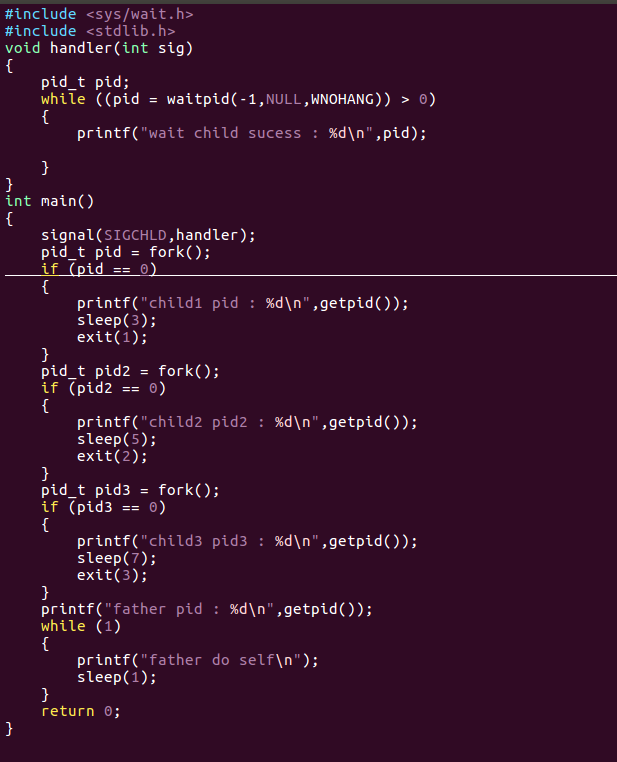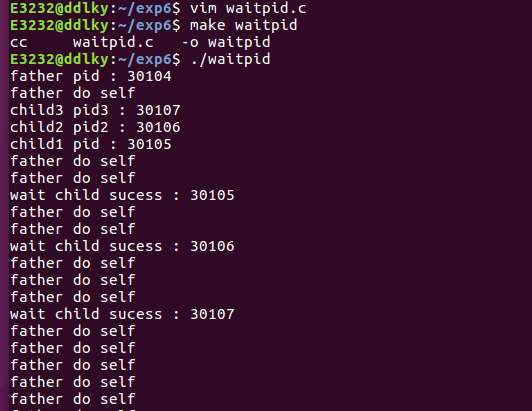实验六 进程基础
实验六 进程基础
| 项目 | 内容 |
| ---- | ---- | ---- |
| 这个作业属于的课程 | 课程班级的主页链接 |
|这个作业要求在哪里|作业要求的链接地址|
|学号-姓名|18043232-何泽晨|
|作业学习目标|1.掌握Linux系统环境C语言编程概念 2.学习Linux系统进程概念|
1.请举例说明静态链接库的创建与使用
ar:静态函数库创建的命令
-c :create
-r :replace
表示当前插入的模块名已经在库中存在,则替换同名的模块;
如果若干模块中有一个模块在库中不存在,ar显示一个错误信息,并不替换其他同名的模块。
//文件名:add.c,加法
int add(int a,int b){
return a+b;
}
//文件名:sub.c,减法
int sub(int a,int b){
return a-b;
}
//文件名:main.c
#include <stdio.h>
int add(int a,int b);
int sub(int a,int b);
int main(){
printf("3 + 1 = %d\n",add(3,1));
printf("3 - 1 = %d\n",sub(3,1));
return 0;
}
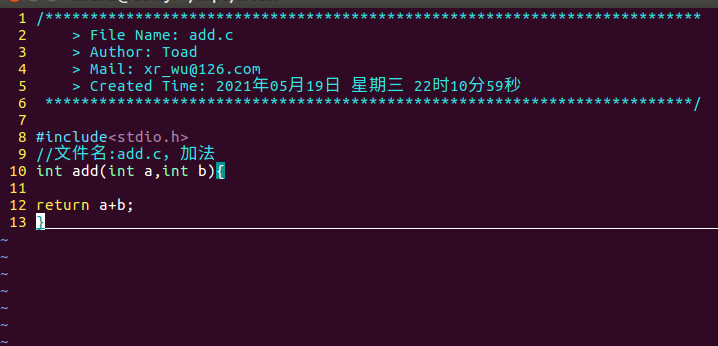



2.请举例说明共享库的创建与使用
#include <iostream>
using namespace std;
//文件名:common.h
#ifndef _COMMON_
#define _COMMON_
int add(int a,int b)
int sub(int a,int b)
#endif
开始的目录结构
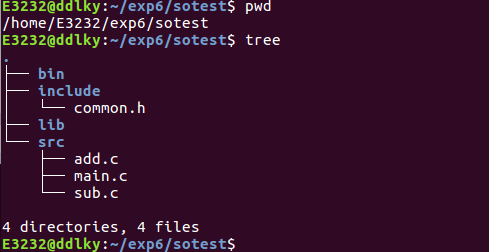
创建共享库
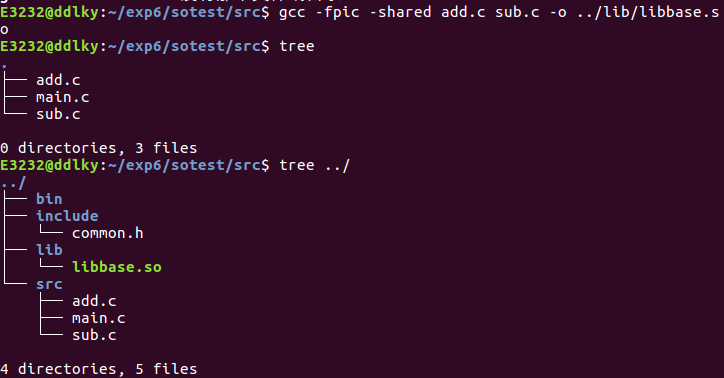
使用自己的共享库
方式一:指定相对路径
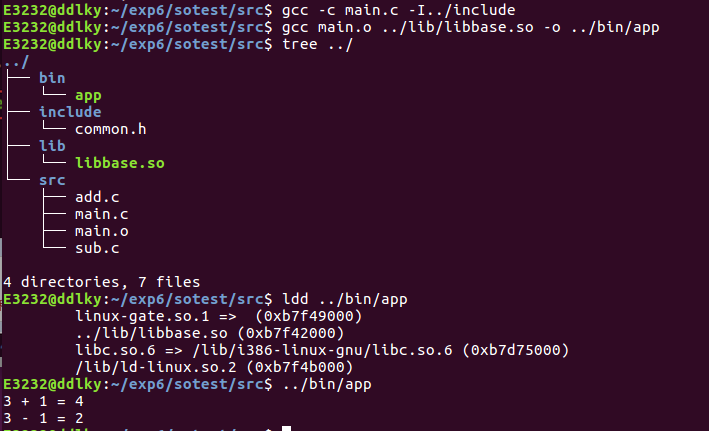
方式二:只给链接器动态库名称(若要正常实现,后面必须添加一个环境变量)
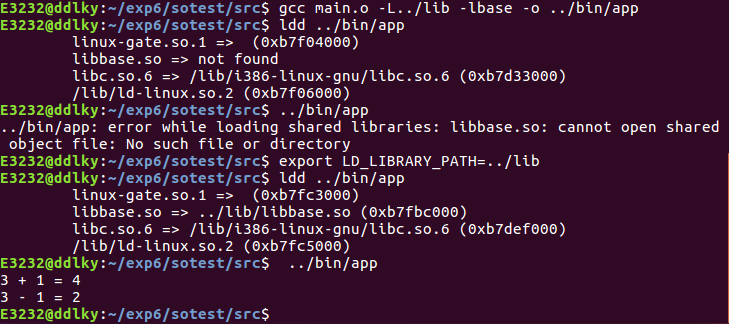
3.编程实现一个简单文件复制命令。
#include <unistd.h>
#include <sys/types.h>
#include <sys/stat.h>
#include <fcntl.h>
#include <stdio.h>
#define BUFFERSIZE 4096
int main(int argc, char* argv[]) {
if (argc != 3) {
printf("usage:\n mycp src dst\n");
return 1;
}
int srcfd = open(argv[1], O_RDONLY);
if (srcfd == -1) {
perror("open");
return 1;
}
int dstfd = open(argv[2], O_CREAT | O_WRONLY, 0666);
if (dstfd == -1) {
close(srcfd);
perror("open");
return 1;
}
int len = 0;
char buffer[BUFFERSIZE] = {0};
while((len = read(srcfd, buffer, BUFFERSIZE)) > 0) {
if (write(dstfd, buffer, len) != len) {
perror("write error");
return 1;
}
}
if (len < 0) {
perror("read error");
return 1;
}
close(srcfd); // 关闭文件
close(dstfd);
return 0;
}

比较复制前后文件的异同:
test: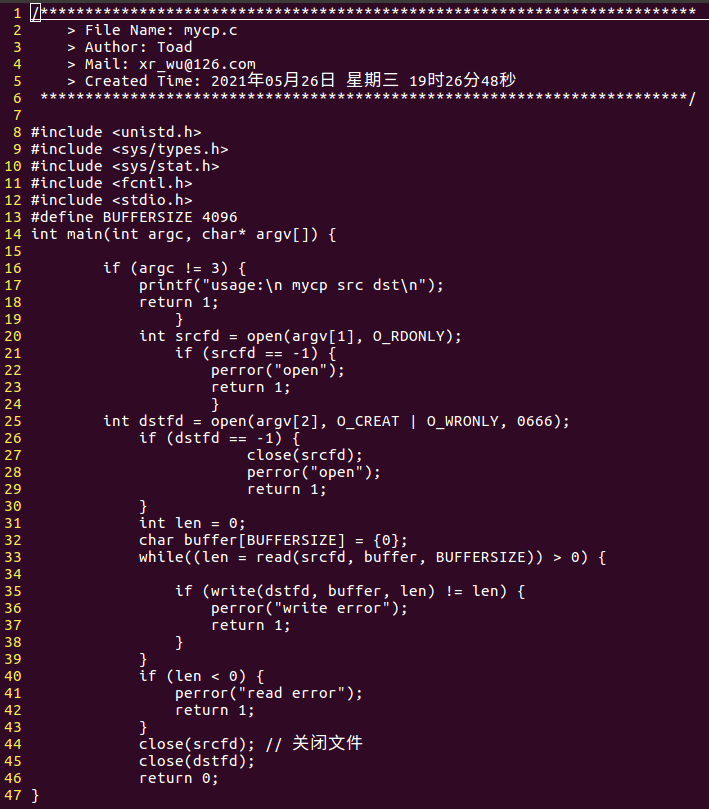
mycp.c: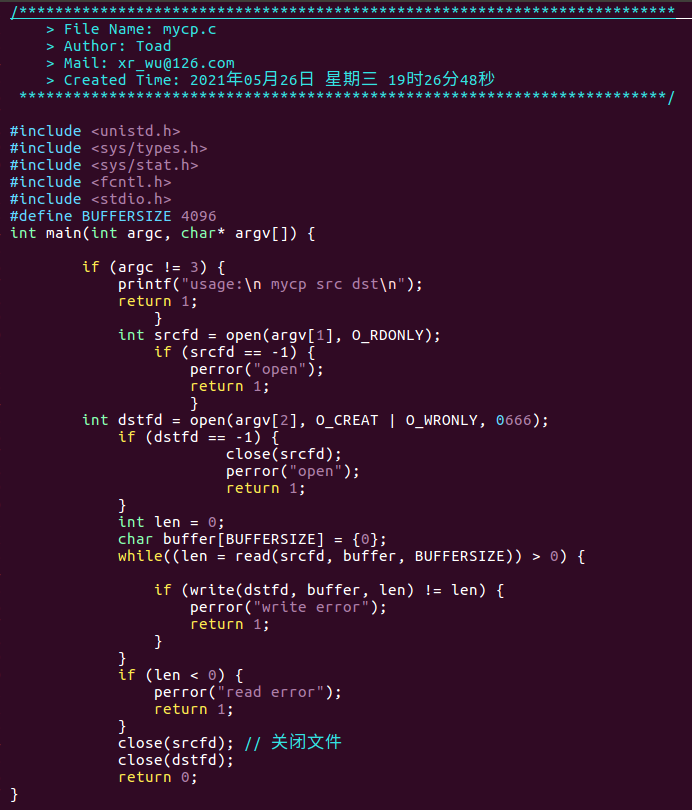
4.使用 fork 创建一个子进程,进程创建成功后父子进程分别输出不同的内容。
#include <stdio.h>
#include <stdlib.h>
#include <unistd.h>
int main(){
pid_t pid;
printf("[%d]:Begin! \n",getpid());
fflush(NULL);
pid = fork();
if(pid<0)
{
perror("fork()");
exit(1);
}
else if(pid > 0)
{
printf("[%d]:Parent process if working!\n",getpid());
}
else
{
printf("[%d]:Child process if working!\n",getpid());
}
printf("[%d]:Finish!\n",getpid());
return 0;
}

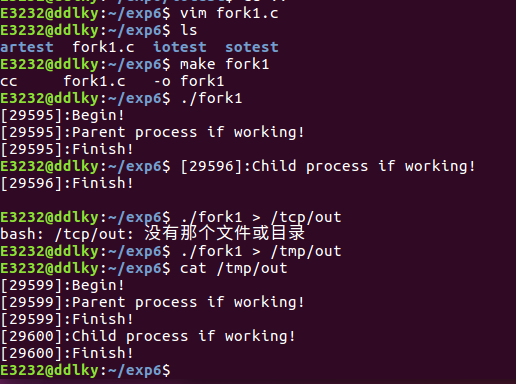
全缓冲:
全缓冲指的是系统在填满标准IO缓冲区之后才进行实际的IO操作;注意,对于驻留在磁盘上的文件来说通常是由标准IO库实施全缓冲。行缓冲:
在这种情况下,标准IO在输入和输出中遇到换行符时执行IO操作;
注意,当流涉及终端的时候,通常使用的是行缓冲。
删除fork1.c文件中 fflush(NULL); 这一行后运行结果为:
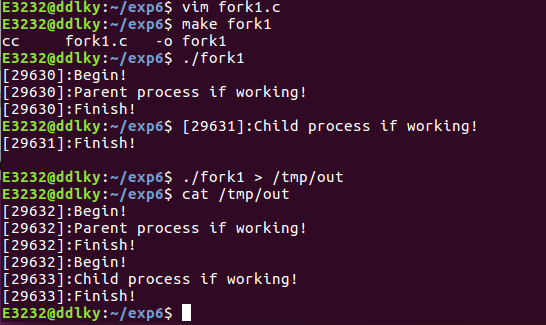
继续删除fork1.c文件中 “ printf("[%d]:Begin! \n",getpid()); ” 这一句中的“\n”结果为:

5.使用fork创建多个子进程
//文件fork2.c
#include <stdio.h>
#include <stdlib.h>
#include <unistd.h>
int main(){
int i;
pid_t pid;
printf("[%d] Begin! \n",getpid());
for (i = 0;i < 3; i++)
{
if((pid = fork()) ==0 )
break;
}
if(pid<0)
{
perror("fork()");
exit(1);
}
else if(pid > 0)
{
printf("[%d] Parent process is working!\n",getpid());
}
else
{
printf("[%d] Child process %d is working!\n",getpid(),i);
}
return 0;
}
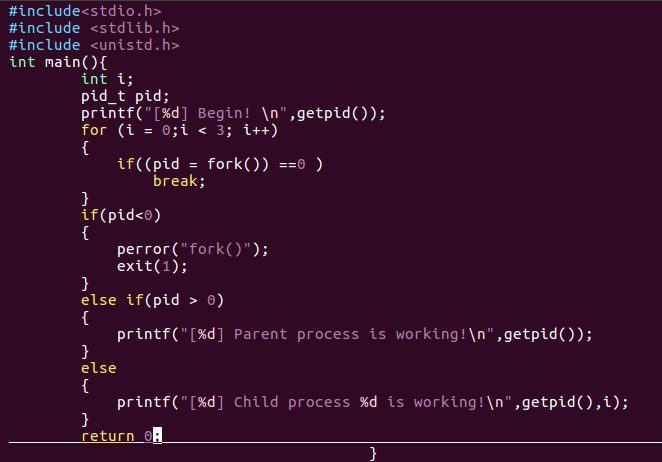

使用sleep函数简单控制进程输出顺序
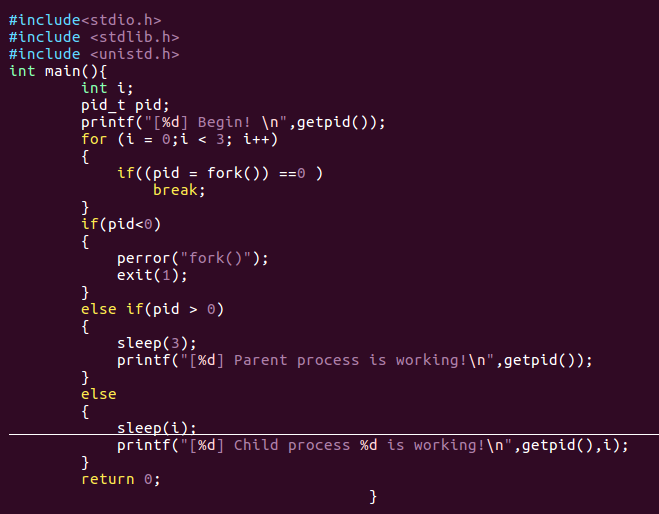
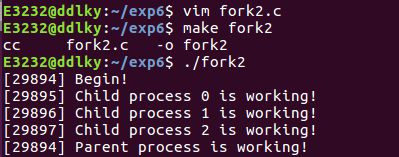
6.在 fork 之前以写的方式创建了一个文件 test.txt。然后 fork 出的子进程立即向文件中写入
“world”,然后睡眠5秒。而父进程在 fork 后睡眠3秒后向 test.txt 写入 "hello",并关闭描述符。子
进程恢复后,又向 test.txt 文件中写入 "lalala"后关闭描述符,结束。
#include <unistd.h>
#include <sys/types.h>
#include <sys/stat.h>
#include <fcntl.h>
#include <stdio.h>
int main() {
int fd = open("test.txt",O_WRONLY | O_CREAT,0664);
if (fd == -1){
perror("open");
return 1;
}
printf("I'm father\n");
printf("before fork\n");
pid_t pid = fork();
if (pid > 0){
sleep(3);
printf("I'm father; I'm writing test.txt...\n");
write(fd, "hello", 5);
close(fd);
}
else if (pid ==0){
printf("I'm child; I'm writing test.txt...\n");
write(fd, "world", 5);
sleep(5);
write(fd, "lalala", 6);
close(fd);
}
else {
perror("fork");
return 1;
}
return 0;
}

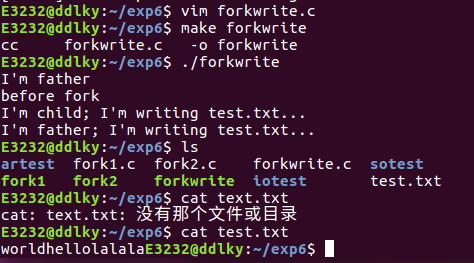
7.分别在主函数中使用execvp 启动 ls 命令以及使用 fork 函数产生子进程调用 execvp 启动 ls
(1)使用execvp启动ls命令
#include <stdio.h>
#include <stdlib.h>
#include <unistd.h>
int main(){
char* argv[] = {"ls","-l",NULL};
if (execvp("ls",argv) == -1){
perror("exec");
return 1;
}
return 0;
}

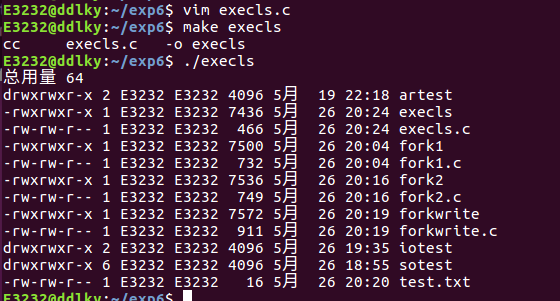
(2)使用 fork 函数产生子进程调用 execvp 启动 ls
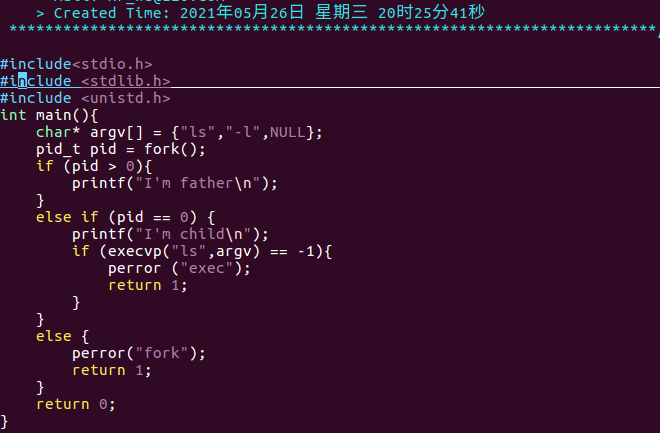

8.创建5个僵尸进程,并在终端通过 ps axf 命令查看僵尸进程信息
#include <unistd.h>
#include <stdio.h>
#include <string.h>
int main() {
printf("before fork\n");
pid_t pid, n = 5;
while(n--) {
pid = fork();
if (pid == 0)
break;
else if (pid < 0){
perror("fork");
return 1;
}
}
if (pid == 0) {
printf("hello, I'm child %d; my father is %d\n", getpid(),getppid());
//getpid() 获取当前进程的pid
//getppid() 获取当前进程的父进程的pid
return 0;
}
while(1) {
sleep(3);
printf("hello, I'm father %d\n", getpid());
}
return 0;
}
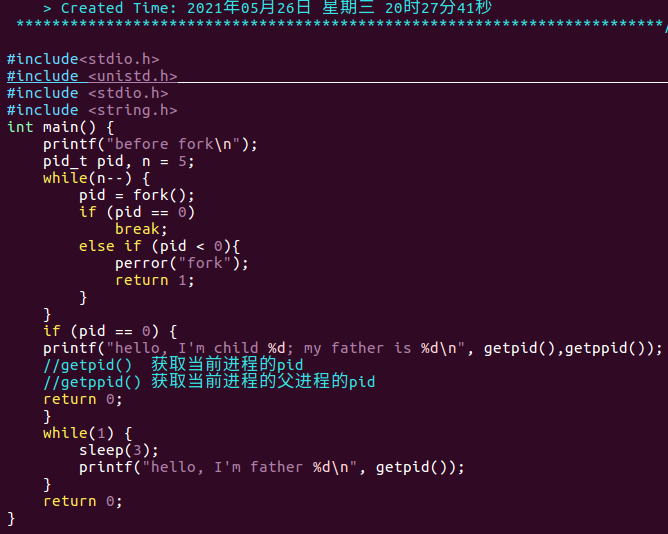

另开一终端输入 ps axf 查看僵尸进程,显示如下:
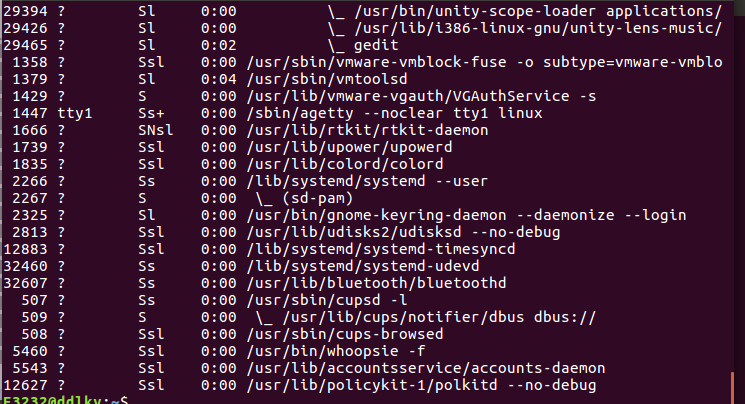
9.通过 wait 来清理僵尸进程
#include <unistd.h>
#include <stdio.h>
#include <string.h>
#include <sys/wait.h>
#include <sys/types.h>
int main() {
printf("before fork\n");
pid_t pid, n = 5;
while(n--) {
pid = fork();
if (pid == 0)
break;
else if (pid < 0) {
perror("fork");
return 1;
}
}
if (pid == 0) {
printf("hello, I'm child %d;my father is %d\n",getpid(),getppid());
return 0;
}
while(1) {
sleep(3);
pid = wait(NULL);
if (pid == -1) {
perror("wait");
sleep(10);
printf("I'm father %d;I have wiped out all zombies\n",getpid());
return 1;
}
printf("Hello, I'm father %d; child %d exit\n",getpid(),pid);
}
return 0;
}

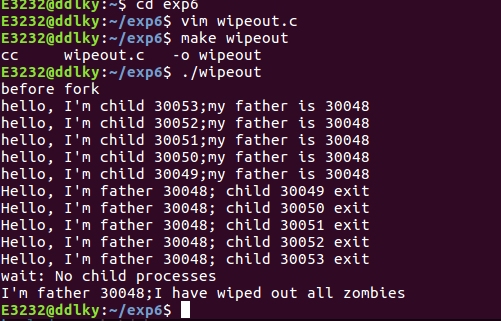
10.父进程通过 waitpid 函数等待特定子进程结束,若该子进程不结束,父进程一直阻塞。
#include <stdio.h>
#include <signal.h>
#include <unistd.h>
#include <errno.h>
#include <sys/types.h>
#include <sys/wait.h>
#include <stdlib.h>
void handler(int sig)
{
pid_t pid;
while ((pid = waitpid(-1,NULL,WNOHANG)) > 0)
{
printf("wait child sucess : %d\n",pid);
}
}
int main()
{
signal(SIGCHLD,handler);
pid_t pid = fork();
if (pid == 0)
{
printf("child1 pid : %d\n",getpid());
sleep(3);
exit(1);
}
pid_t pid2 = fork();
if (pid2 == 0)
{
printf("child2 pid2 : %d\n",getpid());
sleep(5);
exit(2);
}
pid_t pid3 = fork();
if (pid3 == 0)
{
printf("child3 pid3 : %d\n",getpid());
sleep(7);
exit(3);
}
printf("father pid : %d\n",getpid());
while (1)
{
printf("father do self\n");
sleep(1);
}
return 0;
}
